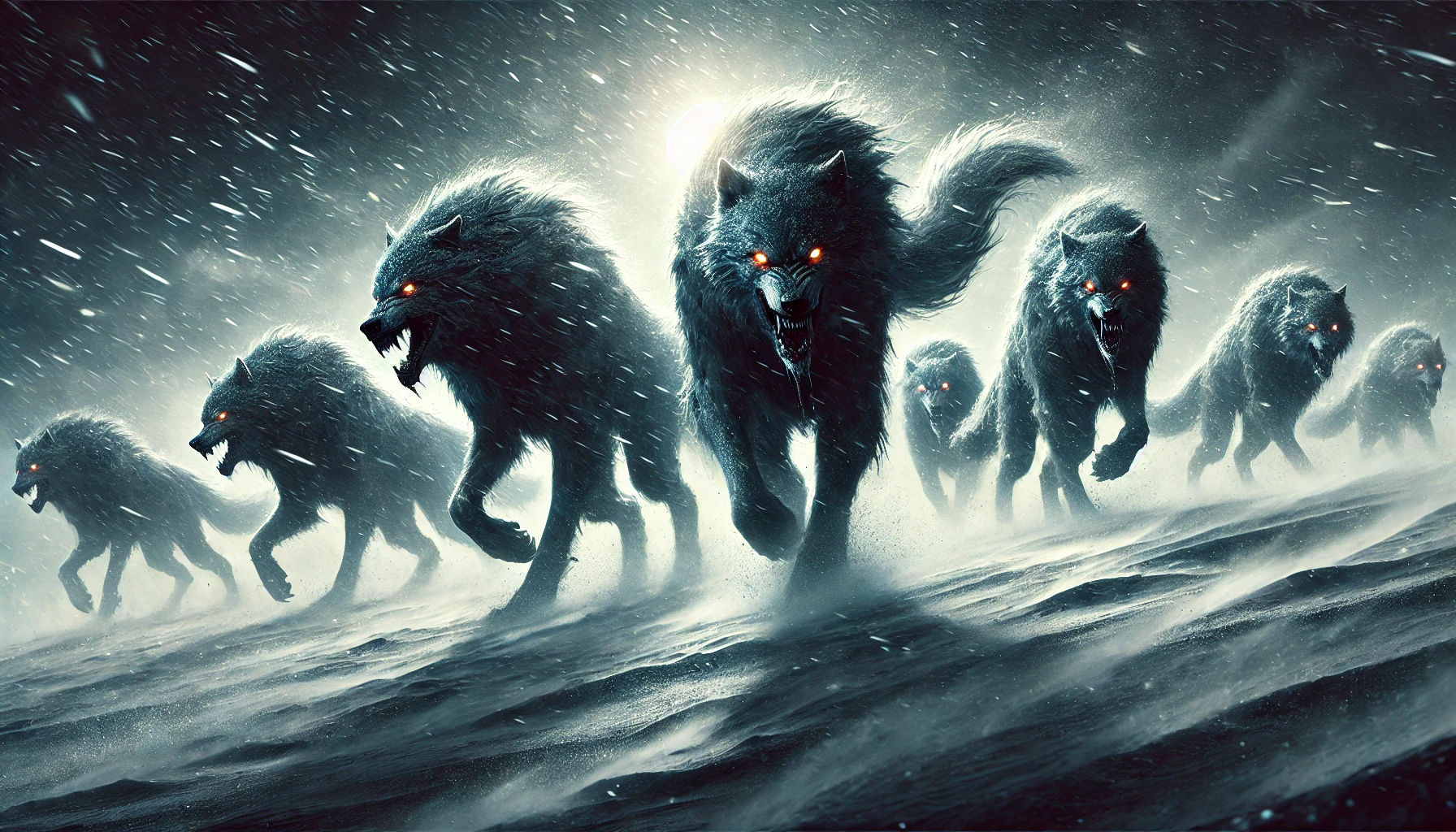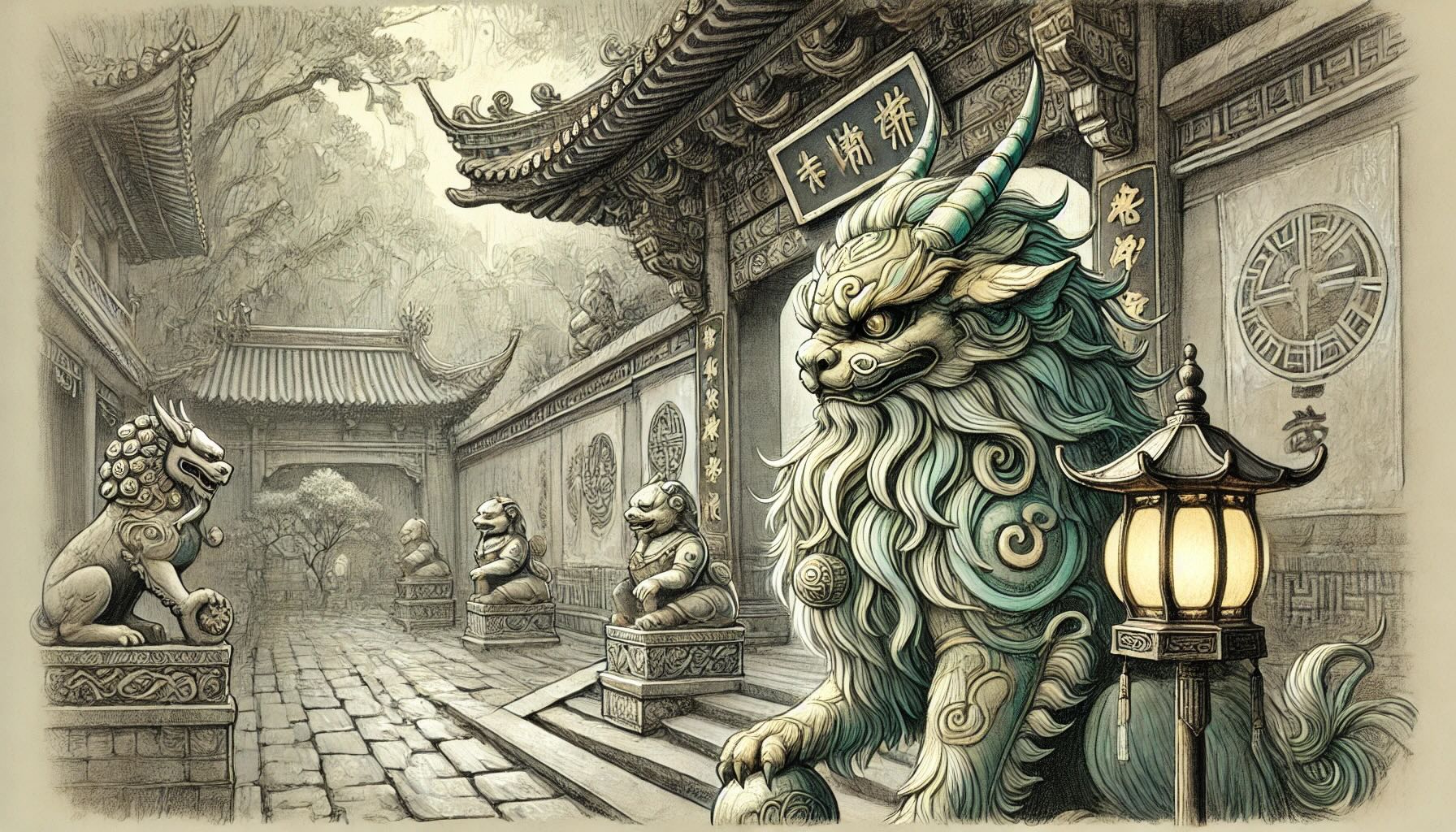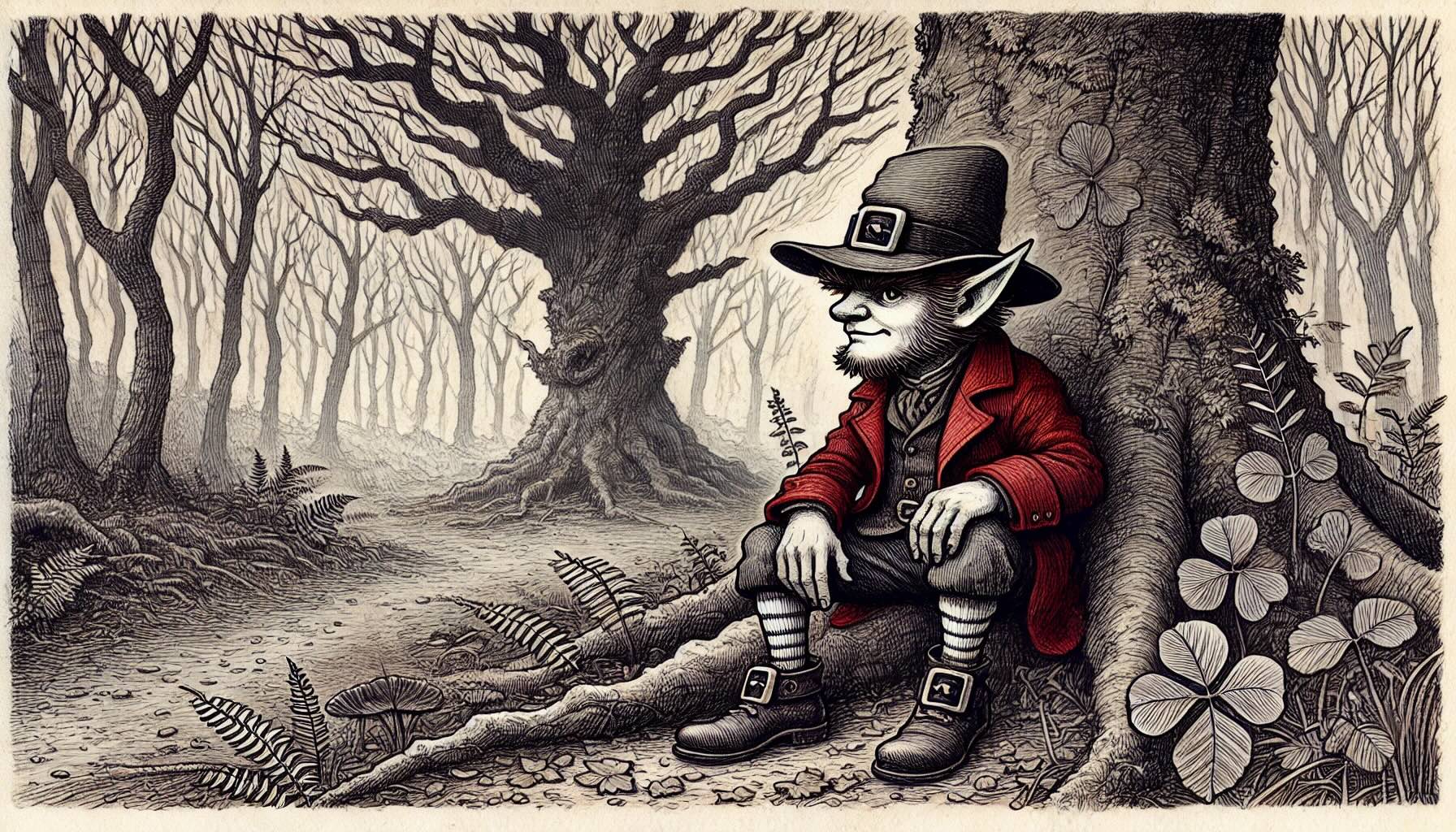Footsteps in the Snow: A Warning Too Late
The wind howls across the ice, a constant wail that drowns out all but the crunch of your boots. The tundra stretches endless and unforgiving, a world of white swallowing all sense of direction. But then—you hear it. Heavy, rapid footfalls behind you. Too fast for a man. Too many for a lone wolf.
You turn, but there’s nothing.
Yet the snow tells another story: a trail of massive paw prints, each interwoven with human tracks.
Run. The Adlet are already hunting.
The Beast That Runs Like a Man: Appearance & Traits
The Adlet is neither fully man nor fully beast. It is a monstrous fusion of both—a humanoid torso rising from the body of a massive, red-furred wolf, its long limbs built for speed and endurance.
Their faces hold an unsettling blend of human intelligence and animal ferocity—wide, yellowed eyes gleaming with hunger, sharp teeth bared in a perpetual snarl. Their legs, canine in form but grotesquely oversized, propel them at speeds no man could hope to outrun.
And always, they hunt in packs.
While some stories describe Adlet as more wolf-like, the most widely told version speaks of their humanoid torsos mounted atop powerful, bestial limbs. What remains consistent is their voracious hunger and their unrelenting pursuit of prey.
Born of Blood: Origins & Folklore
The Adlet originate from Inuit traditions, where they are said to be the cursed offspring of a human woman and a massive red dog. Banished for their unnatural birth, they grew into savage hunters, preying upon the living with an insatiable thirst for flesh.
Some versions of the tale say their mother sent them across the ocean, where they became the ancestors of foreign invaders. Others claim they still roam the Arctic, hunting anything that dares to cross their path. But one thing remains certain—wherever they are, they are said to be driven by an insatiable hunger.
The Hunt Never Ends: Behavior & Hunting Patterns
Adlet are relentless. Once they have your scent, they will not stop. Unlike wolves, who tire and give up when prey escapes, the Adlet’s unnatural endurance means they can chase their victims for days without rest.
- Pack Mentality: They hunt in groups of five to ten, surrounding their prey before closing in for the kill.
- Inhuman Speed: Their long, powerful legs allow them to outrun even the fastest sled dogs.
- Cunning Tactics: Unlike mere beasts, Adlet understand deception—they will drive prey toward cliffs, force them onto thin ice, or flank them in coordinated attacks.
They are not mindless killers. They are intelligent predators.
Surviving an Adlet Encounter: What to Do
If you find yourself in Adlet territory, your best defense is to avoid being noticed. Those who hear the dreaded footfalls behind them have little time to react. One legend speaks of a hunter who, sensing the creatures behind him, dropped his pack and fled toward an icy cliff. At the last moment, he leaped across a frozen crevasse—the Adlet skidded to a halt, unable to follow. If you find yourself in such a predicament, consider the following:
- Do Not Run—Unless You Must. Running triggers their chase instinct, and you cannot outrun them. If they have not yet committed to an attack, stay still and assess the situation.
- Seek Higher Ground. Adlet are built for speed, not climbing. If you can reach jagged cliffs or steep inclines, you may slow them down.
- Fire is Your Ally. They fear fire, but not as much as normal animals. A large enough blaze may deter them—but only temporarily.
- Make Them Work for Their Kill. If caught in the open, use every trick at your disposal: break line of sight, use obstacles, or even wound yourself to mask your scent with blood—anything to confuse their tracking.
Signs You Are in Adlet Territory
Unlike other predators, Adlet do not leave carcasses. They are said to consume nearly everything from their prey, leaving little behind, though some versions of the legend describe them scavenging remains rather than fully devouring them. This makes them harder to detect, but there are still signs:
- Pawprints With Human Steps Interwoven.
- A Sudden Absence of Other Predators. Even wolves and bears avoid areas where Adlet roam.
- Unnatural Silence. If the wind dies and the land falls eerily quiet, something worse than the storm is watching.
- Half-Eaten Tracks. Their unique movement pattern often results in trails that appear broken or disjointed.
If you see any of these signs, leave immediately.
The Adlet’s Place in Inuit Culture
While feared as monsters, Adlet are also seen as a symbol of the dangers of the unknown. They represent the harsh, untamed wilds—the relentless forces of nature that no man can truly conquer.
Some elders whisper that Adlet may not be inherently evil but were shaped by rejection and hunger. In some rare tales, they are even spoken of as misunderstood beings, driven by survival rather than malice. Yet, for those who cross their path, legends tell of few who escape unscathed.
Final Warning: If You Hear the Footsteps…
Few claim to have escaped an Adlet hunt. Those who do speak of the hunt as something worse than the kill itself—a chase that felt as though it stretched across lifetimes, with the sound of heavy breath and padded footfalls growing ever closer.
If you ever find yourself in the frozen north, alone with nothing but the wind and your own heartbeat, listen carefully.
Because if there is another heartbeat that is not your own—
Run.



